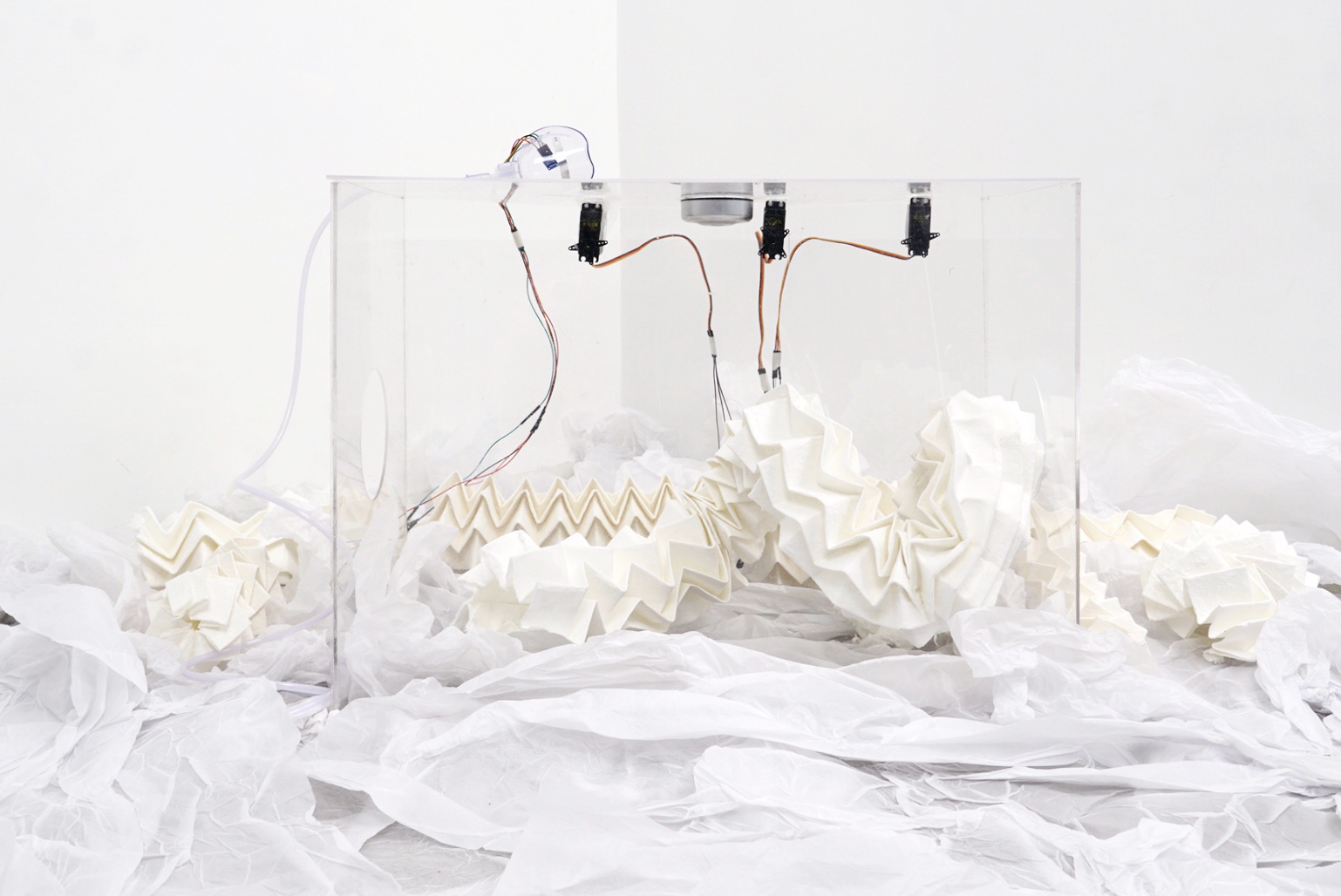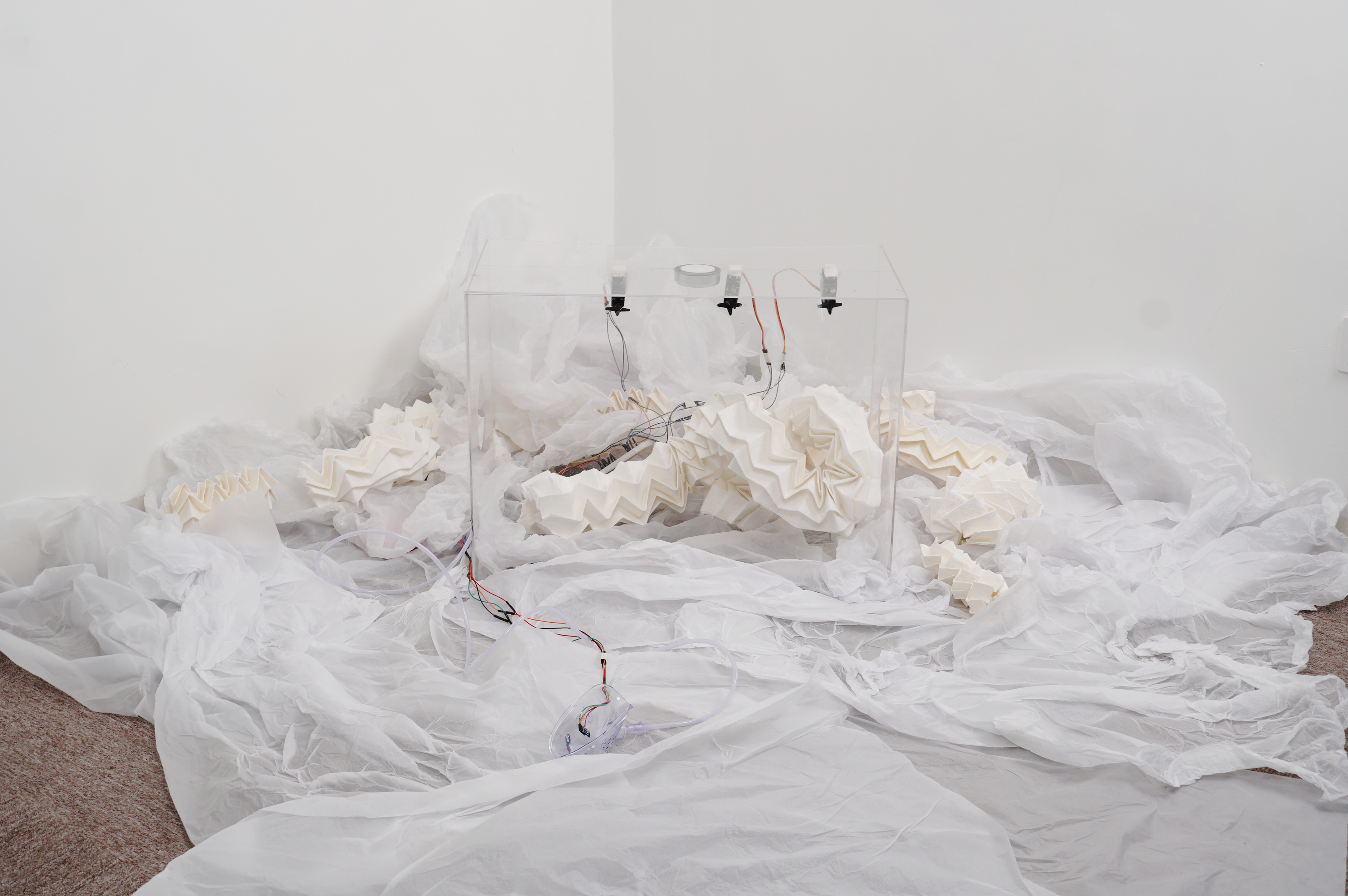ZAI
2019credit(initial version): Gong Xinru, Wu Yitong, Wang Jiayu
我的外婆每天睡觉前都会打坐,她常常告诉我“观呼吸”感受自己的呼吸和意识在身体里的流动。 冥想的人通过呼吸把脑子里混乱的东西带出去,就像在驯养自己的意识。
希伯来圣经中提到上帝将生命之气吹入泥土中,使亚当成为有生命的“nephesh”。“nephesh”常被不确切地翻译为灵魂,它的基本意思更接近于“ 喉咙”或“整个生命和身体都依赖于进出喉咙的东西”,指一个活的、有形的生物体,在圣经的第一页,人和动物也被称为活着的“nephesh”。佛教中的“坐禅”、“冥想”能够改善某些个体的负面状态,降低压力及焦虑,并使个体对自我相关信息的反思式关注降低,人们通过专注自己的呼吸,让意识自由来获得一个轻松的大脑。
ZAI是一个能够随着呼吸缓慢运动的交互装置,也是一个模拟生物,人们通过调整“呼吸”,重复这一生物的最基本行为,让大脑放松、自由。
My grandmother practiced meditation every night before going to bed. She often told me to “观呼吸(observe the breath)” to feel the flow of breath and awareness moving through the body. For people who meditate, breathing becomes a way of clearing the mind of chaos, as if taming one’s own consciousness.In the Hebrew Bible, it is written that God breathed the breath of life into the dust, and Adam became a living nephesh. The word “nephesh” is often loosely translated as “soul,” but its meaning is closer to “throat” or “the whole living body sustained by what passes through the throat.” It refers to a living, embodied being. On the very first page of the Bible, both humans and animals are described as living nephesh.In Buddhism, practices such as zazen and meditation are said to ease negative mental states, reduce stress and anxiety, and quiet the self-referential chatter of the mind. By focusing on their breathing, people allow consciousness to move freely, opening up a calmer, lighter state of mind.ZAI is an interactive installation that moves slowly with the rhythm of breath, like a simulated organism. By adjusting their own “breathing” to echo this most fundamental act of life, people can enter a state of relaxation and mental freedom.




